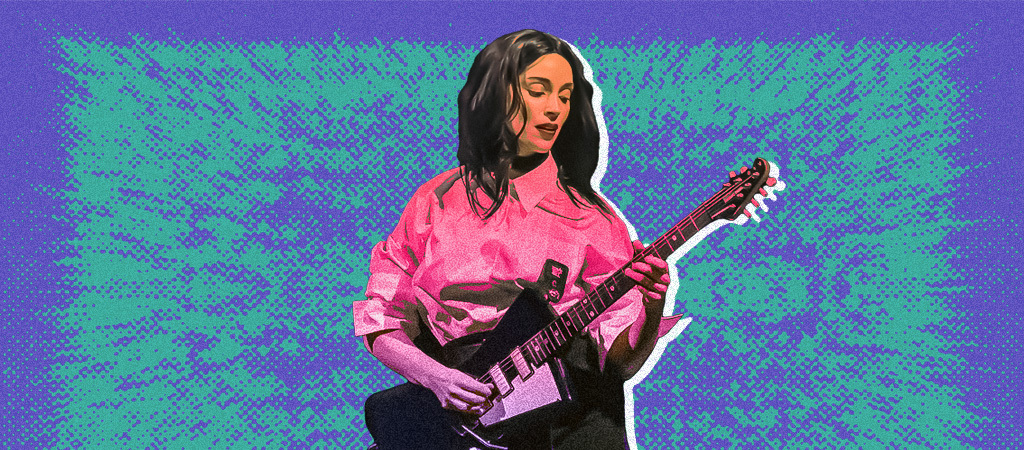It’s hard to talk about eras without acknowledging the artist who basically owns the term now — Taylor Swift closed her European ‘Eras Tour’ run this week — but few artists reimagine and reinvent themselves from album to album like St. Vincent. The signifiers can be everything from hairstyles to full-on sonic aesthetics, but the always expanding vision makes it pretty essential to check in on St. Vincent from album to album.
Her latest run, for the strong All Born Screaming from earlier this year, turns its back on the ’70s scuz of her Daddy’s Home concept and couldn’t be farther from the industrial rubber of Masseduction. Long gone is the jagged art rock of Strange Mercy or her David Byrne period, where Byrne was both a collaborator and inspiration. It’s easy to forget that St. Vincent began her career as Annie Clark, member of The Polyphonic Spree, and then started her solo offerings humbly enough, known for her guitar wizardry, her knack for a catchy melody, and a camaraderie to many of the indie darlings of the time, including The Nationals and Sufjan Stevens.
So where does that leave St. Vincent in 2024? If anything, her Los Angeles headlining set last week at the Greek portrayed an artist free of being locked in to hard-lined signifiers and costuming. Persona is still in play — which I suspect is the case anytime Clark is in the public eye — but on this night, it was less costumed, less defined by the work she was supporting. It also allowed for a setlist that could touch on all eras of her career without needing to play many of her best-known singles. In fact, many of the songs you might consider St. Vincent staples were skipped in favor of tunes that complimented the new material.
Does that mean the show was any less theatrical? Of course not. This is a St. Vincent concert, after all. When she rolled through the punk blitz of “Krokodil,” Clark did her best version of hardcore posturing, even winding up crowd-surfing in a space where that’s truly a rarity. For “Dilettante,” she was a drunken lounge singer, stumbling across the stage with everything but a martini in hand. And for “New York,” she embraced the moment and embodied the young pop singers of today, taking time to take photos with fans in the front row.
There’s tons to be impressed with in a St. Vincent concert, namely in how completely she commits to all of her bits. It’s just a tad unhinged, a splash scary, where she seems to be embodying a person who could snap and break at any moment. Her smiles and laughter always a bit haunted, a bit disconcerting. Of course, this is all part of the performance and is meant to keep the audience on guard. And for the most part, she’s so entrenched in it that it feels seamless.
Where the seams do show is when she tries to reverse course and talk to the audience. It’s very difficult to play the part that St. Vincent does and then be able to reverse course to make band introductions feel sincere and grounded. Instead, moments of addressing the crowd feel too performative, like she lost control of the acceleration and can’t slow back down.
But if that’s the price to pay for St. Vincent’s now-singular brand of conceptual theater, so be it. We don’t go to St. Vincent concerts to meet Annie Clark the actual human being. We go to be swept up in her vision, to check in on how she is evolving and what tricks she has in store. She hasn’t delivered a boring era yet. In a world full of dull sincerity, St. Vincent would rather have a devilishly good time.







